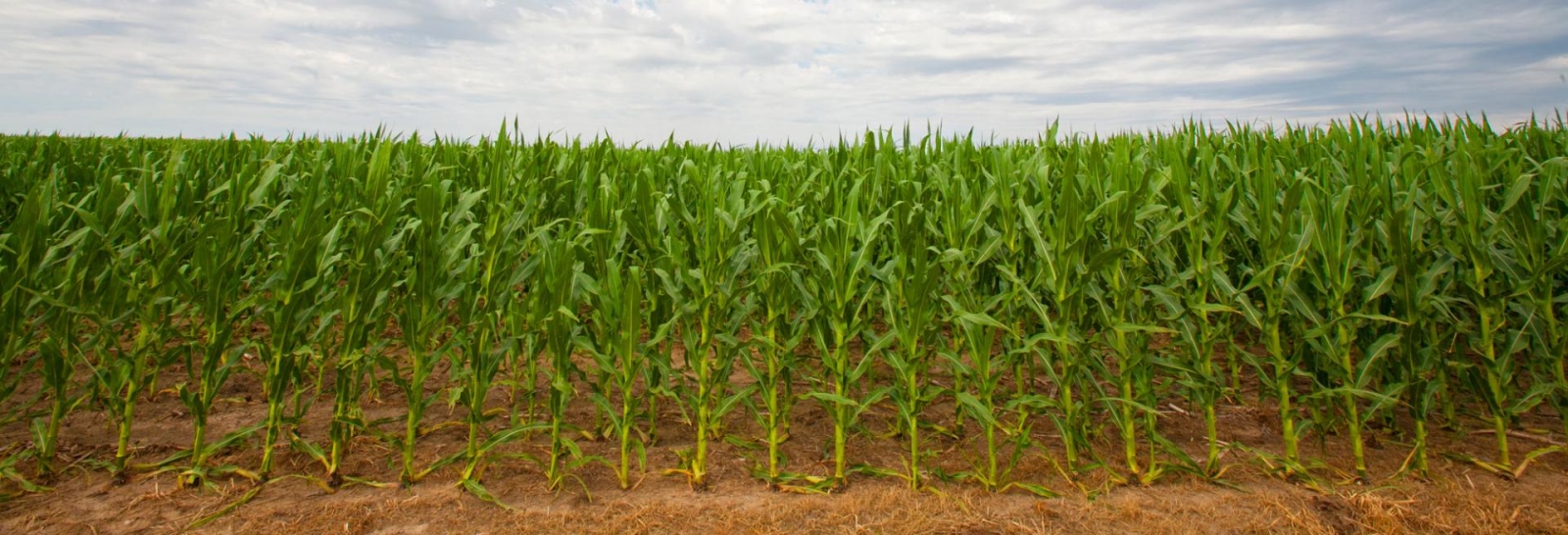In recent days, southern rust (Figures 1-3) has been confirmed in more than a dozen counties in eastern Nebraska (Figure 4). Southern rust is patchy at local levels in affected counties. Meaning it’s easy to find across some fields, but seemingly not present (yet?) in other nearby fields within a handful of miles. This distribution pattern is common for southern rust early after it moves into the state. If weather conditions remain favorable, southern rust will likely continue to worsen within fields and continue to spread within and between fields and to more counties. This year it is especially important to scout corn fields for disease and monitor spread of potential disease threats.
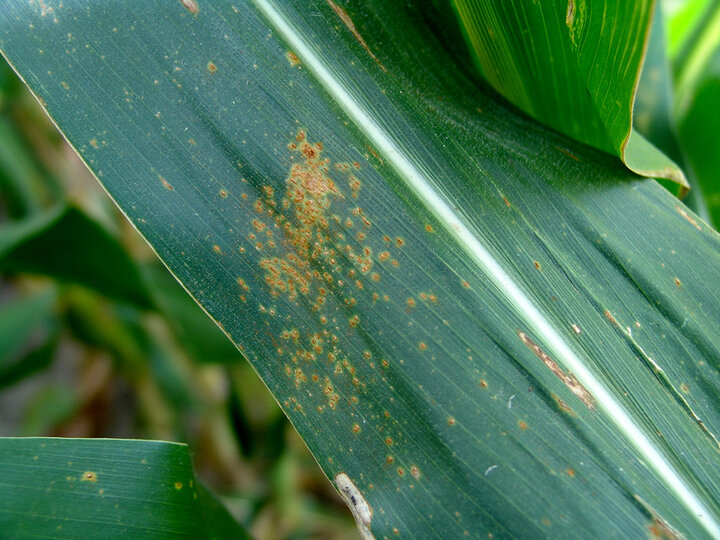
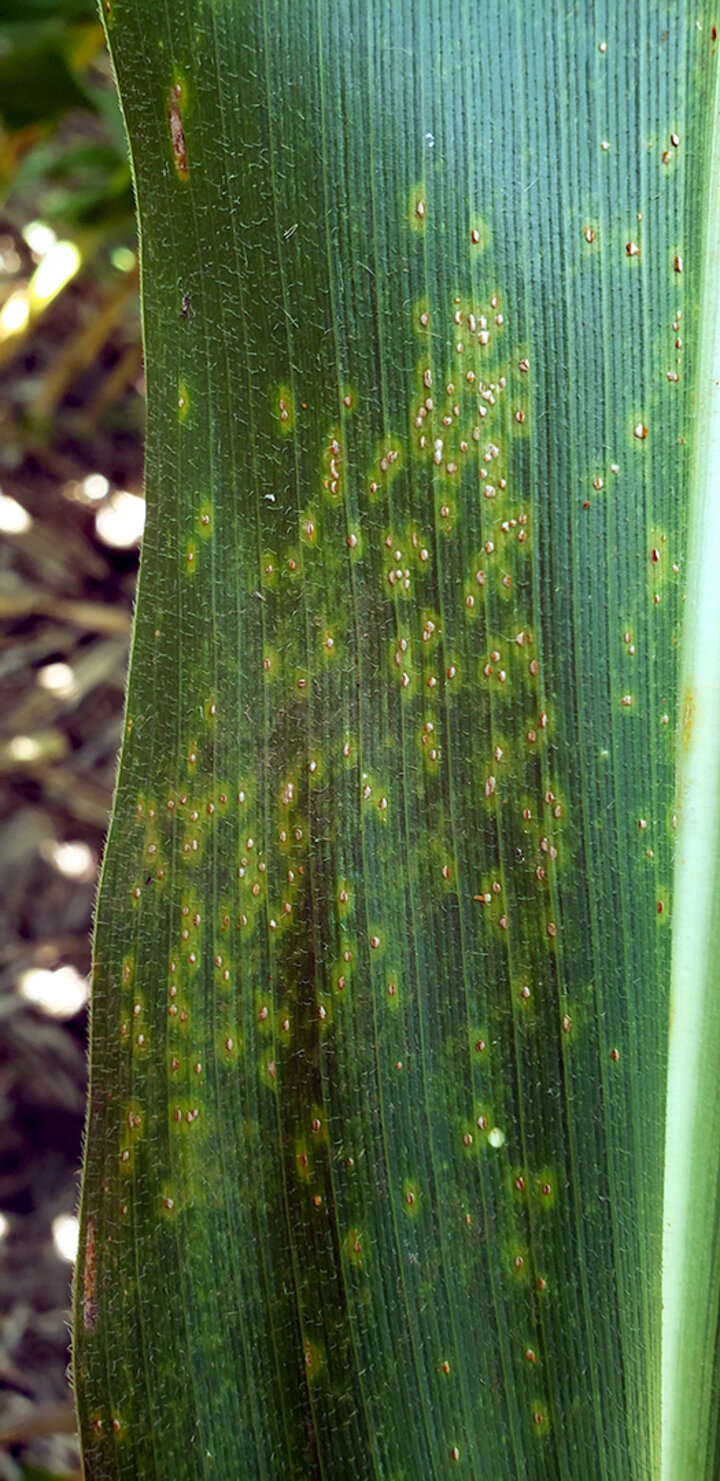
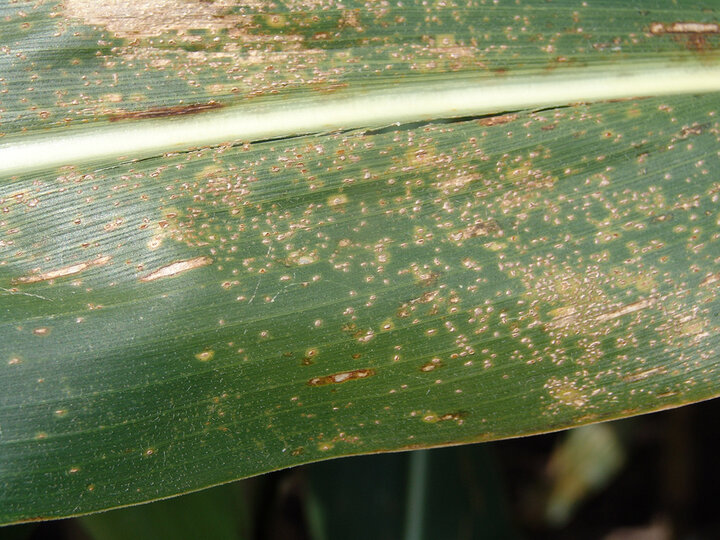
Figures 1-3. Southern rust pustules are small and may appear orange to tan and primarily on the top of leaves.
There are few notable elevated risk factors for southern rust damage this year:
- Southern rust development and presence in several eastern Nebraska counties during the week of July 15 was earlier and more widespread than documented in recent history. Southern rust has rarely developed in northern Nebraska during July historically, so it may be unexpected in northern Nebraska and some other areas.
- This year, there is a wide range of planting dates with many Nebraska corn acres planted later (or replanted) due to the wet conditions this spring. Later planting and cooler growing conditions have slowed crop growth and development in some parts of the state, where some corn is still in vegetative growth stages. Development of southern rust in these fields, especially those that are pre-tassel or in early grain fill stages, creates increased risk for impact on yield later if disease severity continues to increase.
- Favorable disease conditions. Recent and frequent rainfall and high relative humidity are optimal for most fungal pathogens, like the one causing southern rust, Puccinia polysora. Average temperatures around 80°F are also optimal for the fungus and are expected to continue.
Southern rust may be confused with common rust, that is also present in many Nebraska corn fields this year. Common rust is of lesser concern and rarely requires treatment in dent corn because of a natural level of resistance that is common in commercial hybrids. But differentiating common rust from southern rust can be difficult due to similarities in their appearance. The color of some common rust pustules (Figure 5) appeared more orange than the typical brick red/brown, making them appear more similar to southern rust this year and more difficulty to differentiate.
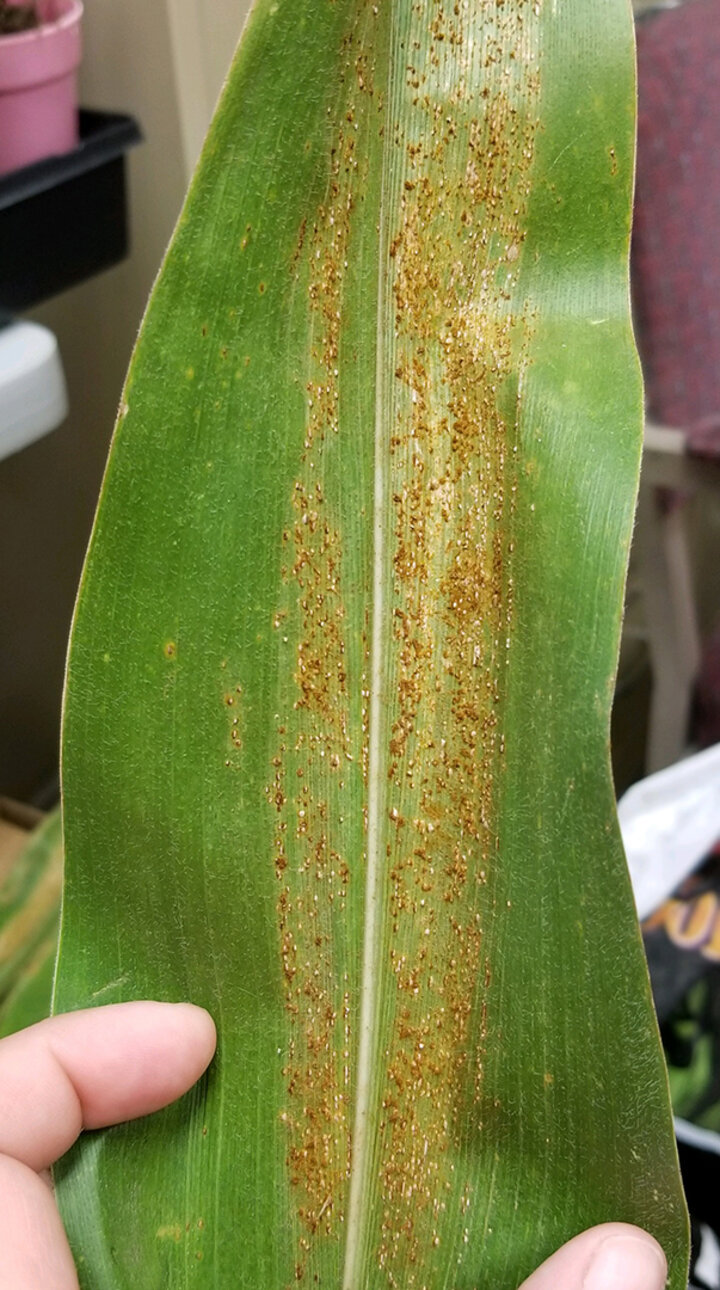
Management
Unfortunately, only a few commercially available corn hybrids are resistant to southern rust. However, some foliar fungicides can provide good disease control if their application is well-timed. The publication “Fungicide Efficacy Ratings for Control of Corn Diseases” summarizes product ratings by disease based on research results conducted at universities for several years. These fungicide efficacy ratings are also summarized in the disease management section of the Guide for Weed, Disease, and Insect Management in Nebraska (EC130), distributed to those with the Nebraska pesticide applicator license.
Most foliar fungicides provide maximum protection for about three weeks following application. Thus, applications made prior to disease development may mean that the window of protection is lost or diminished before disease develops. However, the products are also less likely to provide adequate control and economic return if waiting to apply until after disease is already widespread and severe. Thus, regular scouting of fields is strongly recommended this year to familiarize yourself with the disease(s) that are present, their spread, and increasing severity.
The Crop Protection Network now provides the Corn Fungicide ROI Calculator as a guide to estimate return on investment (ROI) with application of several commercially available products based on disease severity, product costs, commodity price and other parameters.
Other Resources
Monitor southern rust and other diseases in fields and submit a sample(s) to the UNL Plant and Pest Diagnostic Clinic if you need help identifying a disease before making a management decision.
